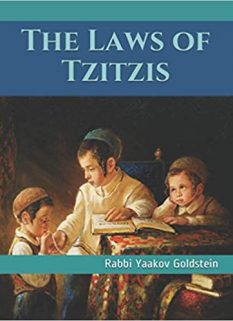*The article below is an excerpt from the above Sefer
*As an Amazon Associate I earn from qualifying purchases.
- Atzilus: The world of Atzilus is higher than the intellect and comprehension of the human mind, as the Chabad of Ein Sof in Atzilus is united with Him in an absolute and most intense unity, which vastly and infinitely surpasses the unity in the world of Beriya.
- Beriya: In Beriya, the Chabad of Ein Sof descended in the form of contractions in order to shine to the creations there and allow them to have some level of comprehension and understanding of G-d, each according to their limited intellectual capabilities. The G-dly revelation had to be contracted to the point that the limited and defined creations could comprehend G-dliness and still retain their existence and not become nullified and reincorporated within their root and source which is actual G-dliness.
- The contractions allow the souls to benefit from G-dliness: This contraction is the cause of why a ray of Chabad of Ein Sof shines to the souls who dwell in the world of Beriyah. In contrast, in the world of Atzilus where the Chabad of Ein Sof is not in such a state of contraction, it’s not possible for created intellectual beings to receive from it and comprehend G-dliness at all.
- The world of Atzilus is the abode for those very great Tzadikim whose service of Hashem surpasses even the service of intellectual love and fear.
- The reason: Being that Atzilus is above the intellect of creations, therefore it is the resting place of the great Tzadikim who served Hashem on a level even higher than intellect and even higher than the love and fear that is achieved through comprehension of G-d’s greatness.
- What is this level of service? The above Tzadikim constantly serve Hashem as an actual Merkava for the infinite light of G-d, acting as a chariot of G-d, to be completely nullified to Him and be incorporated in His light, both personally and with all their belongings, through the fulfillment of Torah and Mitzvos.
- An example of such Tzadikim: An example of such Tzadikim were the Avos, our forefathers, who throughout all their days they served Hashem as a chariot.
- Their permanent residence in Beriya: Those whose soul root cannot handle being a constant chariot for G-d, to be constantly nullified and incorporated within Hashem’s light, do not permanently reside in Atzilus even if they occasionally serve G-d as a chariot. Rather, such a Tzadik who occasionally serves Hashem as a Merkava mainly dwells in the world of Beriya.
- Their occasional residence in Atzilus: Although the main residence of a Tzadik who occasionally serves Hashem as a Merkava is in the world of Beriya, nevertheless, at auspicious times his Neshama is elevated to Atzilus as a form of Mayin Nukvin.
- The occasions in which they serve G-d as a chariot: An auspicious time above when people can reach the service of being a chariot for G-d, is during Shemoneh Esrei, which corresponds to the world of Atzilus. This especially applies to the bowing during Shemoneh Esrei, as every bow is the aspect of Atzilus, as it represents nullification to G-d’s light to be considered like complete nothingness before Him.
Related Articles
Daily Tanya Sunday 16th Menachem Av Igeres Hakodesh 5 Part 2: Divine Speech in Creation
Post Views: 29 16th Av The Creation of the World The sages ask why this world was specifically created with the letter Hei (ה). The answer lies in the layered complexity and purposefulness of creation. Multiplicity of Worlds and Spiritual Beings There are countless worlds, palaces, and spiritual beings—angels and
Daily Tanya Tuesday 11th Menachem Av Igeres Hakodesh 4 Part 2: Spiritual Circumcision and Redemption
Post Views: 68 11th Av Divine and Human Roles in Spiritual Transformation An awakening from above only comes in response to an awakening from below; individuals must first initiate the process of spiritual refinement, much like the symbolic act of the “feminine waters” rising before the “masculine waters” descend. Removing
Daily Tanya Monday 10th Menachem Av Igeres Hakodesh 4: The Exile of the Heart and the Path to Redemption
Post Views: 77 The Challenge of Inner Service Not everyone attains deep, heartfelt service to the Divine, as the soul’s inner spiritual faculty can be in a state of exile. The Spiritual Exile This exile mirrors the Shechinah’s exile with the Jewish people, as described by the sages, when the
Daily Tanya Thursday 6th Menachem Av Igeres Hakodesh 2: The Danger of Pride in Receiving Kindness
Post Views: 129 Epistle 2: The Danger of Pride in Receiving Kindness 6th Av Responding to Divine Favors with Humility With every favor bestowed by G-d, a person should become more humble. Being brought closer to G-d requires ever-greater self-effacement, reflecting the principle that “all that are before Him are
Daily Tanya Wednesday 5th Menachem Av Igeres Hakodesh 1 Part 3: Accountability for Prayer Diligence
Post Views: 167 Who Should Lead Prayer on Weekdays During weekdays, those who have free time, such as teachers or individuals supported by their families, should serve as prayer leaders. Businesspeople, who typically lack the time, are generally exempt from this responsibility during the week. The one who leads prayer
Daily Tanya Tuesday 4th Menachem Av Igeres Hakodesh 1 Part 2: The Power and Purpose of Torah Study
Post Views: 184 The Foundation of Faith and Spiritual Strength Faith acts as the support for the intellectual and emotional faculties of the soul, enabling deep contemplation and emotional connection with the Divine. The study of the laws in the Oral Torah is essential, as it reveals the Supreme Divine


 Donate
Donate
Leave A Comment?
You must be logged in to post a comment.